Iron and steel are basically the same things, right? Wrong! If you’re a blacksmith or metalworker, there’s a big difference between these two materials.
What’s the difference between iron and steel? Iron is a chemical element that can be found in nature. There is lots of iron within the Earth’s crust. Steel is an alloy, which means it’s made from two or more different elements. One of which will be iron. Humans have been using iron for thousands of years. As far back as 1,200 BC. Discovery and widespread production of steel came much later.
In this article, you’ll learn the different properties that separate iron and steel, where blacksmiths can get cheap steel, and the grading system used to tell different kinds of steel apart.
What’s The Difference Between Iron and Steel?
There are a bunch of differences between steel and iron.
The biggest difference is that iron is a naturally occurring element. You can break open rocks filled with iron ore, melt it down, and form it into pure bars of iron. Then you can use the iron to make a variety of different objects.
Steel is an alloy. To make it, you first need to refine iron and then mix it with carbon. Depending on the type of steel, you can add other metals to create a wide range of different alloys. Each has their own different properties that are better suited to making different kinds of tools and items.
For example, if you add chromium to steel, you get stainless steel. It doesn’t rust as easily as regular steel and it’s more durable.
In modern construction, steel is used instead of iron most of the time because it’s stronger and holds up better to compression and tension. Many everyday things were made of cast iron or wrought iron in ancient times, but these were largely replaced by steel after the Industrial Revolution.
An iron alloy can only contain up to 2% carbon and still be called steel. If it contains more than 2% carbon, it’s known as a different product called pig iron. Melting down iron ore with coke to create pig iron is an easy way of processing it, and is often an intermediate step in the refining process. Pig iron then gets processed to reduce the amount of carbon in it, turning it into steel.
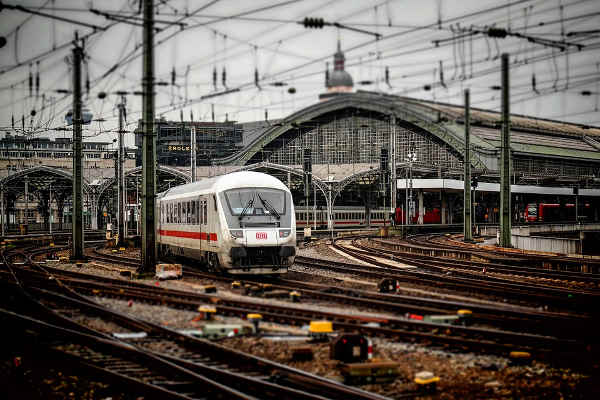
Differences In Properties – Iron vs Steel
Just looking at iron or steel, the average person might not be able to tell the difference. But there are some key distinctions between these two materials. Namely cost, corrosion, versatility, durability, and strength.
Strength. Steel is unquestionably stronger than iron. This is because it’s a more dense material. Steel has entirely replaced iron in the creation of houses, buildings, railways, and many other objects. Steel is more lightweight than iron. It’s also more malleable and stands up better to tensile stress. Steel is less likely than iron to bend, deform, or warp over time.
Cast iron can be quite strong, but it’s hard to make into smaller items like a thin wire without losing its toughness. It can be more brittle, which isn’t good in the construction of buildings or most other applications. Cast iron has still has a few applications today but is mostly limited to cookware and some tools.
Corrosion. Corrosion is a process that happens because of oxidation. Oxides are more chemically stable forms of a metal when compared to refined metal, so nature is always working to restore refined metal back to their original form. Oxidation makes metals rust and turn orange.
Steel isn’t immune to corrosion, oxidation, and rusting. But it’s much more resistant than iron because it’s less porous. Specific alloys like stainless steel are specifically made to protect against corrosion. There are also protective paints that can be used to coat either steel or iron.
Durability. Steel structures hold up better against the elements than iron over time. Steel can handle more heat from fire and other extreme forces. It’s better at withstanding wind and rain as well. Since iron is more porous, it’s more likely to be affected by mildew or mold. Durability and the fact that it doesn’t rot, crack, twist, or wrap is a big reason why steel is now used in construction instead of iron.
Sustainability. Both steel and iron are considered sustainable. You can melt them down and recycle them to make new objects. Neither material loses their durability when they’re recycled, and can be reused over and over.
Steel is considered to be the more environmentally friendly option simply because it’s more durable. The process of recycling iron also tends to be more energy-intensive than recycling steel.
Versatility. Steel is far more versatile than iron. You can shape it and bend it however you need and it will retain its shape. You can even make hollow steel pieces.
Pure iron is too soft for many applications that steel is used for. It needs to be mixed with carbon or some other kind of metal to create an alloy, which gives it more strength. Pure iron is great for casting or forging into ornate decorations, but it’s not as useful for construction.
Cost. Using steel is normally more cost-effective compared to iron. Steel has been mass produced for around 200 years, and the process of making it has become very efficient and affordable.
Different grades of steel and iron have different prices. But as a general rule, steel is cheaper than iron.
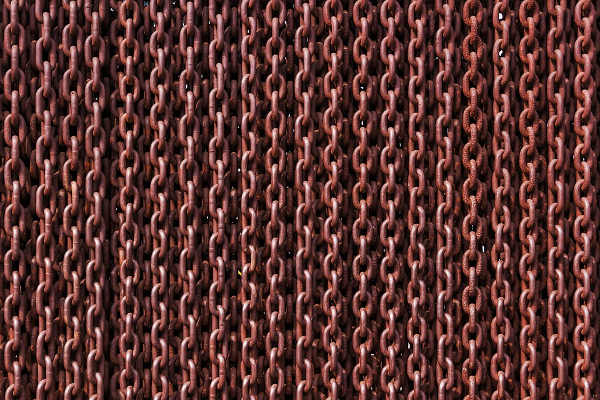
There Are Many Different Types Of Steel
It’s said that there are more than 3,500 different grades of steel available. And three-quarters of them have only been developed within the past two decades! Each one has different chemical and physical properties and uses.
Generally speaking, steel is an iron alloy that contains less than 2% carbon. Anything over 2% iron is considered either pig iron or cast iron.
The four main types of steel
Although there are thousands of grades of steel, we can break them down into four main categories.
Stainless steel. Stainless steel contains between 10% and 20% chromium. Steel that contains more than 10% chromium becomes hundreds of times more resistant to corrosion than regular steel.
Tool steel. Tool steel can be made of a variety of different alloy sand might include tungsten, vanadium, molybdenum, or cobalt. These elements make the end product more durable and heat resistant.
Alloy steels. An alloy steel contains elements like copper, chromium, aluminum, nickel, titanium, or silicon. These elements change the strength, weldability, hardenability, ductility, or other properties of the steel to suit a wide range of different needs.
Carbon steel. The majority of steel is carbon steel, and it’s the kind of steel most commonly used for blacksmithing. A steel can be low, medium, or high carbon. Low carbon steels contain up to 0.3% carbon. Medium steels contain between 0.3% and 0.6% carbon. High carbon steels contain more than 0.6% carbon, but less than 2%.
High carbon steel gets very brittle once it has been heat treated. It’s difficult to weld or bend. So most blacksmiths prefer to work with low or medium carbon steel for most of their pieces.

Where can a blacksmith get used steel?
Most people have been to a lumberyard, but don’t know that steelyards exist to get steel.
Most steelyards are open to the public and you probably have one in your area. But it can be a bit intimidating to go to one for the first time, especially if you’re just now learning the difference between iron vs steel. You’ll be overwhelmed by the amount of different steel you can choose from. Not to mention that it can be costly to buy brand new steel.
So for that reason I’d recommend starting by using recycled steel. It can either be free by using old pieces of steel around your house that you don’t need anymore. Or at a considerable discount from buying new steel if you get old pieces from a scrapyard.
Some great recycled steel sources to get started with include:
- Railroad tracks
- Railroad spikes
- Lawnmower blades
- Braided cables
- 55-gallon drums
- Rebar
- Old tools, especially metal chisels and files.
- Old car springs
Once you start looking for old pieces of steel to use for blacksmithing, you’ll be surprised how much you’ve probably got in your garage and basement already.
Just be sure not to use galvanized steel — it can produce toxic fumes that are hazardous to your health!
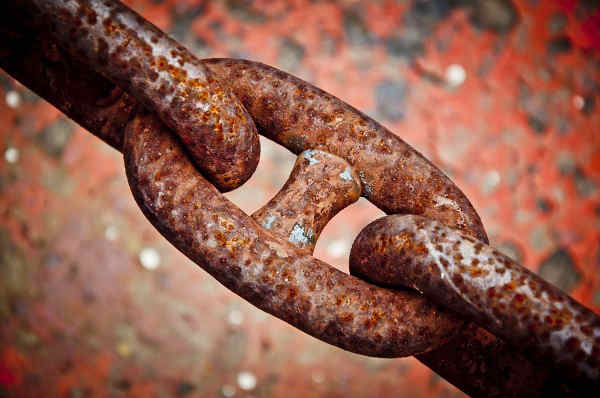
Buying steel stock
If you do want to go buy new steel, you’ll want to know how the steel grading system works. Otherwise you’ll be overwhelmed with what all the different numbers and letters mean.
Normally steel will be marked with four or five digits.
The first digit tells you the general category of the steel:
- 1 means carbon steel
- 4 means molybdenum steel
- 5 means chromium steel
- 6 means chrome vanadium steel
- 8 means nickel chromium molybdenum steel
- 9 means silicon manganese steel
The second digit tells you if there are any other elements added to the steel.
Most steel will have a 0, meaning there are no other additives. A 1 means sulfur. If an alloy contains lead or boron, there will be a letter L or B after the second digit.
The last two digits tell you the percentage of carbon in the steel.
So 50 = 0.5% carbon. It’s worth noting that this number isn’t exact, because the carbon content can’t be perfectly controlled during the manufacturing process. But it’s as close to an exact number as they can get it.
So as an example… 1050 steel is a carbon steel that doesn’t have any additional alloys, and a 0.5% carbon content.
When you’re buying steel for blacksmithing, 1050 or 1095 are a good choice to start with. They’re pretty cost-effective and aren’t as hard as tool steels. 1095 is cheaper, but it isn’t quite as tough and durable. But for your first few blacksmith projects it’s an okay choice.
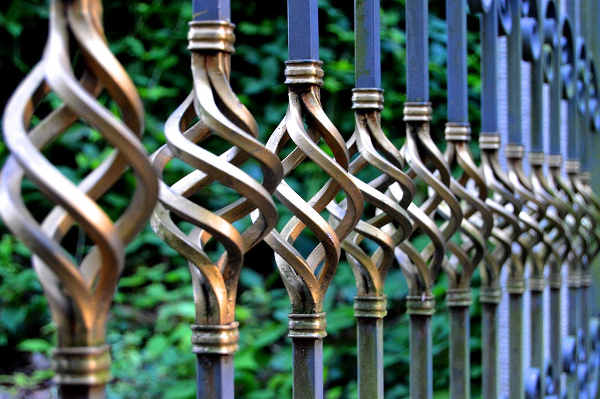
Steel Vs Iron: A Quick Summary
Here is a summary of the differences between iron and steel.
Composition. Iron is an element that occurs naturally in the Earth’s crust. Steel is an alloy created by combining iron with other elements. Usually carbon.
Melting point. Iron melts at 1538 degrees C (2800 F.) Steel usually melts at 1370 degrees C (2500 F.)
Color. Iron is a lustrous silver-grey color. Steel is usually silver, but different alloys can affect color, and coatings can be applied to its surface to change color.
Weight. Iron is heavier than steel.
Strength. Steel is stronger than iron.
Applications. Steel is used in construction, railways, aerospace, transportation, and many other uses. Iron is mostly only used for cookware, utensils, and some tools in modern times.
Corrosion. Iron is very corrosive and rusts easily. Steel is less corrosive. Stainless steel is about 200 times less corrosive than plain steel.
Recycling. Both iron and steel are 100% recyclable.
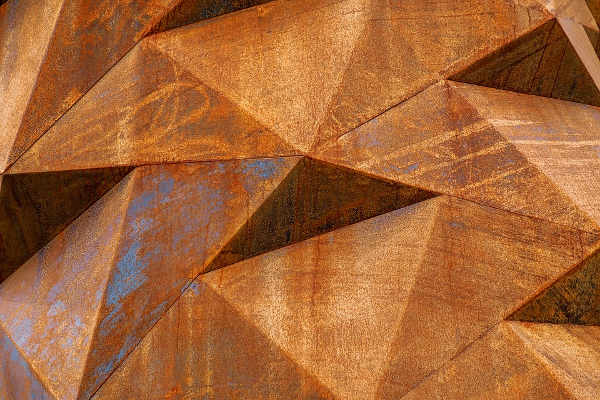
Related Questions
Q: What’s the history of ironworking?
A: We don’t know exactly when ironworking began. But it appears that the first use of iron was to make tools around 3,000 BC in Egypt. The Greeks began making hardened iron weapons around 1,000 BC. The Iron Age is generally believed to have began between 1,200 and 600 BC.
Q: Where does pig iron get its name?
A: Pig iron was traditionally made using sand molds. There would be one main section that the molten iron would flow down, and it would go off into smaller molds at right angles. This gave the appearance of a littler of piglets suckling at their mother pig. (Okay, you’d need some real imagination to come up with this.) Once the iron had cooled, the smaller pig ingots could be broken off from the main runner section. Modern pig iron is made by a pig casting machine that produces ingots continuously.
Q: Is steel a metal?
A: What a silly question. Of course steel is a metal, right? Actually… no! Steel is an alloy, not a pure element. So technically it’s not a metal. Iron is a pure metallic element, but steel is only partially comprised of iron. It also contains non-metallic elements like carbon.
Think of it like a fruit salad. A fruit salad is made up of several different fruits, but the entire combination isn’t a fruit.
Metal is a specific kind of pure chemical element. So while we normally think of anything shiny and hard as a metal, technically one of the most common things we consider a metal (steel) isn’t actually a metal!
What material do you mainly use for blacksmithing, iron or steel? Do you buy it new or recycle it? Let us know in the comments section below!

